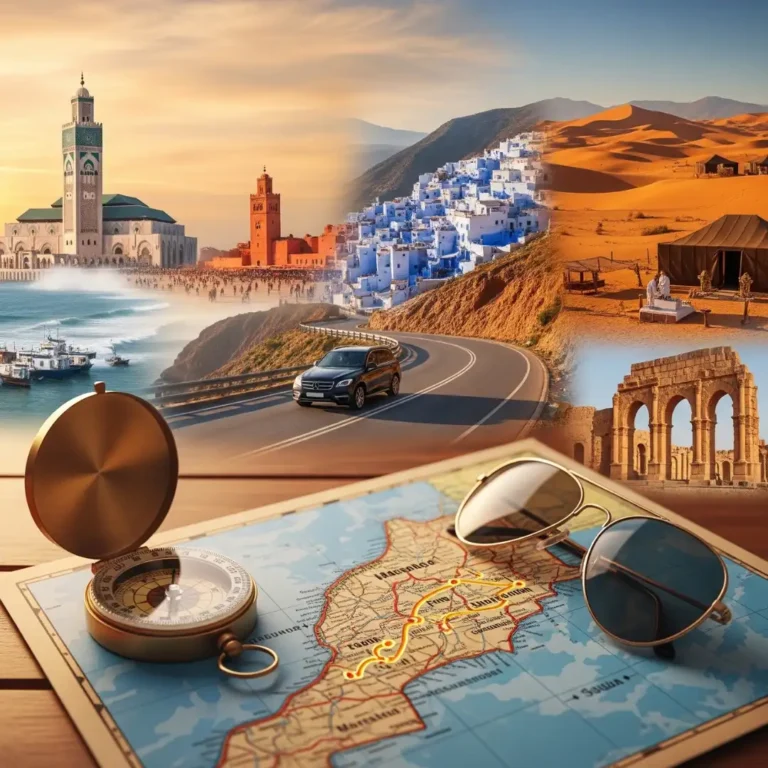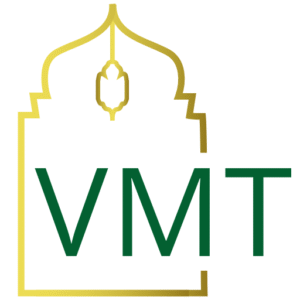Curious? Ask...
Inspire Me...
See Our World
We serve mint tea and hot updates. Subscribe and sip both!
We serve mint tea and hot updates. Subscribe and sip both!
Royal Legacy Tour
Walk into Morocco’s living history with a guided visit to the Mausoleum of Mohammed V, one of Rabat’s most treasured landmarks. This masterpiece of white marble and zellige tilework is more than a resting place — it’s a symbol of independence, unity, and pride. With your guide, you’ll uncover stories of a king who shaped the nation, admire the artistry in every mosaic and arch, and understand why this site holds a sacred place in Moroccan hearts. A royal stop that blends history, beauty, and soul in one unforgettable tour.
The Mausoleum of Mohammed V – Guided Tour is more than a sightseeing stop; it’s a journey into Morocco’s soul. Nestled on the banks of the Bouregreg River in Rabat, this dazzling white structure crowned with a green pyramid roof is one of the country’s most iconic landmarks. It honours King Mohammed V, the beloved monarch who guided Morocco to independence, and his sons King Hassan II and Prince Moulay Abdellah. Stepping inside, you’re greeted not just by marble and mosaics, but by silence, reverence, and a palpable sense of history. With a knowledgeable guide by your side, the Mausoleum reveals stories that connect Morocco’s royal legacy with its living traditions today.
For more historical background on this royal landmark, see the detailed overview on Morocco.com’s feature about the Mausoleum of Mohammed V.
The Mausoleum of Mohammed V is not just a royal tomb; it’s a national monument. Mohammed V holds a special place in the hearts of Moroccans as the “Father of Independence.” He stood against colonial powers, symbolising dignity and resilience. His resting place reflects the respect and devotion of a nation, becoming a site of pilgrimage for both citizens and visitors. For Morocco, this mausoleum is a reminder of unity, sacrifice, and progress — a place where history feels alive.
A guided tour brings these layers to light, weaving personal stories of the King’s courage with the symbolism built into every tile, arch, and carving. Without context, you may see only marble; with guidance, you see meaning. As highlighted by Morocco.com, the Mausoleum of Mohammed V is more than a monument—it’s a national treasure.
From afar, the mausoleum shines bright against the Rabat skyline, a masterpiece of Alaouite architecture. The details begin at the gates: ornate bronze doors, cedar wood ceilings, and guards in red uniforms that add to the sense of ceremony. Inside, look down — the marble floor reflects the dazzling chandeliers, creating a soft glow. Look up — the dome’s carved plasterwork and zellige tiles shimmer like woven jewels.
The tomb itself is crafted from gleaming white onyx, surrounded by green marble, echoing both purity and Morocco’s spiritual colour. Your guide will point out inscriptions from the Qur’an, each chosen to honour the King’s legacy of faith and leadership. Even the silence of the room is meaningful: it invites reflection, not just observation.
A visit to the Mausoleum of Mohammed V naturally pairs with the Hassan Tower, the unfinished 12th-century minaret that stands just opposite. Together, they create a dialogue between Morocco’s medieval ambition and its modern heritage. After exploring both, stroll along the Bouregreg River promenade, where Rabat’s contemporary life flows easily alongside its past.
After immersing yourself in the solemn beauty of the Mausoleum, you might continue with the Mohammed VI Museum of Modern and Contemporary Art, where Morocco’s present-day creativity takes centre stage. Bold paintings, sculptures, and installations provide a striking contrast to the timeless marble halls you’ve just left behind, reminding you that Morocco is not only a land of heritage but also of innovation.
From there, step further back in time with a guided walk through the Chellah Necropolis. Crumbling Roman ruins lie scattered among medieval walls, storks nest atop ancient stone, and wild gardens quietly reclaim the site. The atmosphere is hauntingly beautiful, offering a contemplative pause that balances both history and nature.
To close the day, the Kasbah des Oudayas invites you into its narrow blue-and-white alleyways overlooking the Bouregreg River and the Atlantic. With Andalusian gardens blooming behind fortress walls and panoramic views opening toward the sea, it offers a lighter, more playful counterpoint to the Mausoleum’s grandeur.
To Moroccans, the mausoleum is not simply a landmark; it is a place of respect. Locals may come here quietly to honor their King’s memory, especially on national holidays. While visitors often admire the beauty of the architecture, locals feel its heartbeat: Mohammed V is remembered as a leader who stood with his people, not above them.
On a guided tour, you learn subtle details that tourists might miss — such as the significance of the guards’ attire, the symbolism of the green tiles, or why the Hassan Tower next door remains incomplete. These insights transform the visit from sightseeing into connection.
Dress respectfully: While not a mosque, this is a sacred site. Modest clothing (covering shoulders and knees) is appreciated.
Timing matters: Visit earlier in the morning or late afternoon to avoid crowds and capture the best light for photos.
Take your time: Don’t rush through. Pause in silence — the atmosphere is part of the experience.
Photography: Allowed, but always with respect. Avoid flash inside the main chamber.

The real magic happens beyond the photo op. Let our guides lead you through living history, vibrant culture, and authentic encounters for an unforgettable journey.

Visit Morocco Tours
Escape Alchemist
VMT
Tell us your travel drama, we’ve got solutions!